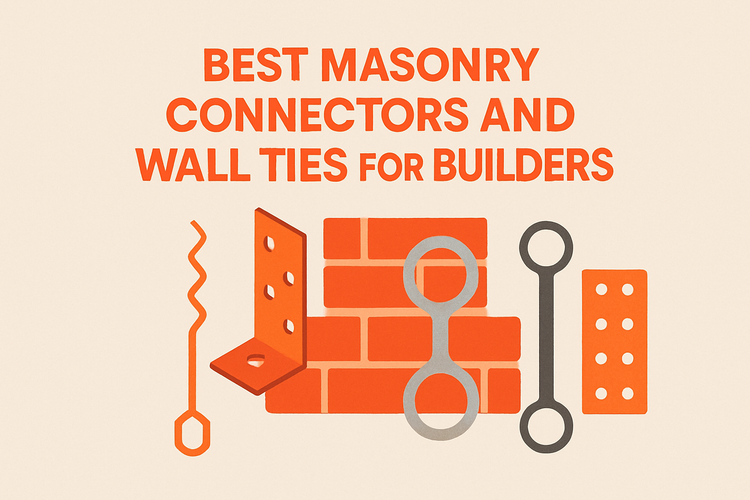Best Masonry Connectors And Wall Ties For Builders

Importance of Quality Masonry Connectors and Wall Ties
High-quality masonry connectors and wall ties are critical to a building's structural integrity. These components keep masonry walls securely aligned and maintain stability under load and weather pressures.
Choosing the right masonry connectors and wall ties ensures proper load distribution and resistance to wind uplift and lateral forces. Subpar products can compromise both safety and durability. Reliable connectors prevent cracks, reduce maintenance costs, and prolong the lifespan of the structure. As part of a builders' toolkit, wall ties and connectors are indispensable during initial construction and later upgrades or extensions.
Types of Masonry Connectors for Different Applications
There are several types of masonry connectors designed to accommodate specific construction needs. Commonly used ones include wall ties, cavity wall ties, movement ties, and frame cramps.
Standard wall ties are ideal for bonding two leaves of masonry, providing stability and strength. Cavity wall ties are placed between the inner and outer leaves of cavity walls to resist lateral load and reduce moisture bridging. Movement ties allow for the differential movement between masonry panels and are critical around expansion joints. Frame cramps secure masonry to structural frameworks such as steel or timber.
Each type serves a unique function and should be selected based on the wall system, location, and expected loads. In high-seismic or high-wind zones, heavy-duty or stainless-steel connectors are recommended to ensure building safety. Understanding the purpose and load-bearing capacity of each masonry connector helps builders prevent structural issues long-term.
Installation Best Practices for Wall Ties and Connectors
Correct installation of wall ties and connectors is as crucial as the product quality itself. Improper placement can compromise structural support and lead to costly repairs.
Wall ties should be installed horizontally level and at the correct spacing, typically 2.5 ties per m² for cavity walls. They must be embedded properly in mortar joints with a slight incline to prevent moisture accumulation. Using a combination of vertical DPC barriers and weep vents in conjunction can further improve moisture resistance.
If tying into timber or steel frames, fixings must match the frame material to avoid corrosion or loosening over time. Tools such as alignment rods or profile guides can help maintain positioning accuracy. Builders should always refer to the manufacturer’s installation guidelines and local building codes to ensure compliance and safety.
Material Considerations for Harsh Environments
In coastal or industrial areas, masonry connectors are constantly exposed to high levels of moisture and corrosive agents. This makes material selection a key factor in performance.
Stainless steel connectors offer superior corrosion resistance and are preferred for areas with high salt exposure. Galvanized steel ties are generally sufficient for inland or low-risk environments. Choosing the correct grade and finish ensures durability and reduces long-term maintenance. For applications with load variability, combining these ties with other elements such as high wind ties & timber connectors can offer added stability and peace of mind.
Engineered wall ties for dynamic loads also feature double-drip designs or dual-wall anchoring capabilities that enhance functionality. Considering environmental design load and exposure ensures the reliability of the tie throughout the lifespan of the structure.
Integrating Masonry Connectors with Other Structural Components
For robust and cohesive construction, masonry connectors must work in harmony with other structural elements such as joists and base fixings.
Using additional components such as post bases or joist hangers can bolster the foundation and improve overall force distribution. This layered approach increases resistance to lateral movement and settlement, especially in multi-storey or load-heavy constructions.
Pairing wall ties with suitable frame anchors or restraint straps enhances both vertical and horizontal load retention. Masonry connectors should not operate in isolation but as an integral part of the envelope system. Their appropriateness in design and their integration is essential for safety, compliance, and performance in modern construction practices.
